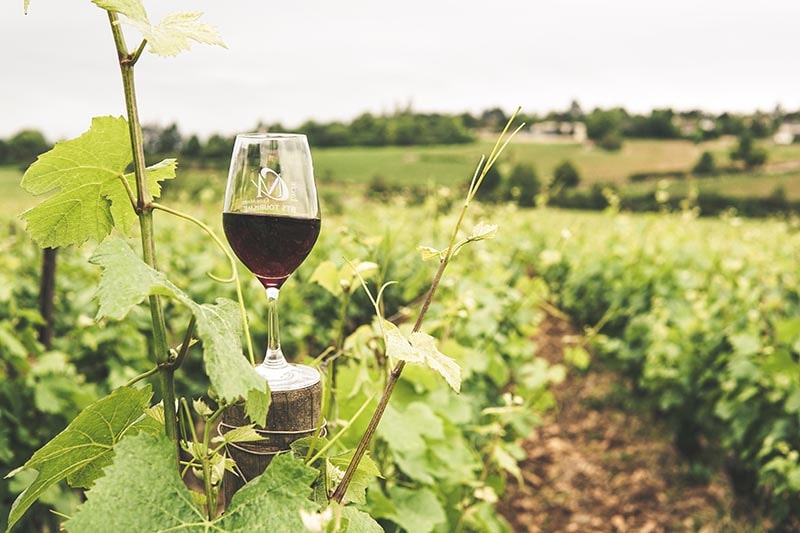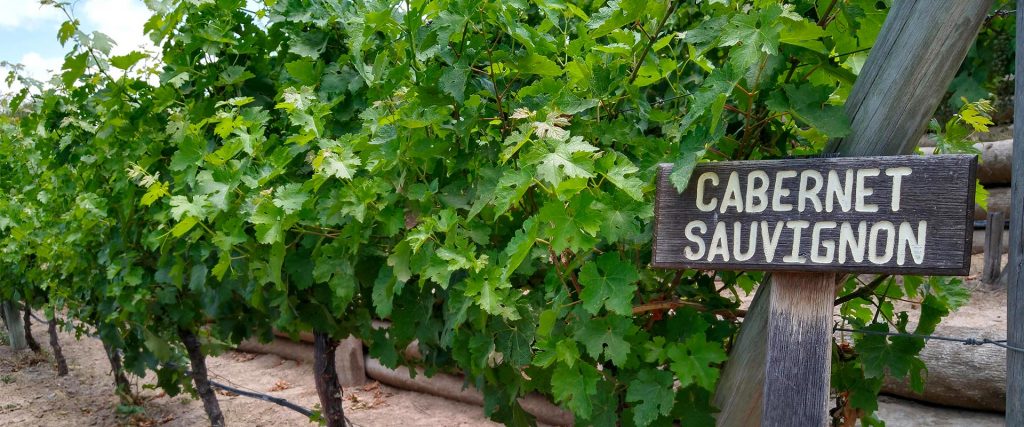The king of reds, as Cabernet Sauvignon is widely known across the world, has been one of Argentina’s star varieties for over a century.
While for years it was the key ingredient in Argentine Bordeaux-blends, today it’s also standing out as a varietal, assuming different characters depending on the specific terroir and style. Today, exploring Argentine Cabernet Sauvignon takes you into an endless universe of flavor, and we’ve narrowed the many good reasons for uncorking a bottle down to four:

4 compelling reasons to try Argentine Cabernet Sauvignon
1. A variety with a thousand stories to tell
Cabernet Sauvignon arrived in Argentina at the same time as Malbec, in the mid-19th century. Since then, Argentine Cabernet Sauvignon has been a favorite of local producers because it was a means of making wines similar to those found in Bordeaux, which were extremely popular in the country.
Argentinians’ love of Bordeaux wines encouraged winemakers to perfect their methods for growing Cabernet Sauvignon, which eventually led, by the end of the 20th century, to it being the most commonly chosen variety for the production of fine wines.
“Until the emergence of Malbec as Argentina’s iconic wine, the best wines from these latitudes were red blends with a base of Cabernet Sauvignon; or it was simply made as a varietal in bottles that are still surprising us several decades on,” says Alejandra Riofrío, the Winemaker at Navarro Correas, a traditional winery that has long produced argentine Cabernet Sauvignons in Mendoza.
2. The continental character
The major producers of Cabernet Sauvignon generally grow the grape in coastal regions by the sea or major rivers. This defines the character of the terroirs which in turn determine the profile of their wines. This is true, for example, of France, the USA, Chile and Australia.
However, in Argentina, almost all the Cabernet Sauvignon vineyards are spread across high altitude valleys in the west of the country, at heights of over 2000 feet above sea level, and more than 500 miles from the Atlantic Ocean. Any influence that might come from the Pacific is blocked by the Andes mountain range.
“The geography exposes the vines to a dry, sunny climate with a large thermal range – because of the altitude and mountain climate. Higher plantations experience a cooler climate that allows for gradual ripening, resulting in ripe fruit at little risk of getting overripe with mild pyrazines that leave greater room for dark fruit and spice flavors,” says Pablo Cúneo, the Winemaker at Luigi Bosca.
These continental conditions thus ensure that Argentina produces wines with a unique character, something that is especially apparent among the Cabernets, making them easily distinguishable from those produced elsewhere in the world.
3. A thousand-mile stylistic road trip
While in most regions across the world, the variety tends to be planted in a specific area, you can find Argentine Cabernet Sauvignon pretty much anywhere wine is grown in the country, from the Calchaquí Valley to Patagonia. This is equivalent to a thousand-mile road trip, like travelling from Bordeaux to Munich.
A notable stretch of this journey takes us to some of the highest vineyards in the country – and the world – at heights of 8500 feet or more in Cachi, Salta. The region has more hectares under vine with Cabernet Sauvignon than Malbec and there is no doubt that the variety takes on its own distinctive style here with spicy, herbal aromas, hints of cumin and paprika and intense, vibrant, flavorful palates.
In Cuyo, most Cabernet Sauvignon is grown in Mendoza, with notable regions including Maipú, with its voluminous warm climate profile featuring ripe dark fruit and spice notes, while in Luján de Cuyo, Agrelo and Perdriel are stand-out areas with their refined, fruity character, good body and enveloping texture.
“In Luján de Cuyo, the factors that contribute to the quality of Cabernet Sauvignon are the lime/clay soils, sizeable thermal range and temperature lows that aren’t as cold as other areas. This all contributes to gradual ripening that we can count on with a fair degree of confidence,” says Martina Galeano, the Oenologist at Casarena.
In the Uco Valley, vineyards in La Consulta and Paraje Altamira tend to produce a juicy style with rich freshness and aromas of dark fruit and mountain herbs.
Vista Flores offers a more robust style, but with plenty of tension and energy, making it very suitable for aging.
Tupungato, with its higher vineyards and cooler climate, makes for a more refined character with prominent freshness to balance out the region’s lusher qualities.
Finally, San Rafael is a historic bastion of Cabernet Sauvignon in Mendoza, where the wines are elegant and classical with traditional, old-school profiles.
“Because it’s a variety with a long ripening cycle, Cabernet Sauvignon has adapted very well to the terroir of San Rafael, where the sandy loam soils and gentle winds during phenolic development allow it to reach its ideal ripening point without any health issues. This helps us to make very elegant Cabernet Sauvignons with subtle spice notes and lovely sweet tannins,” says Jimena López, the oenologist at Funckenhausen Vineyards.
Patagonia, meanwhile, encompasses a couple of different styles, one in Neuquén, where the sun, warmth and wind make for opulent, flavorful Cabernet Sauvignons and the other in Río Negro, which is more classical in an Old World, Bordelais vein.

4. A bright future
“Argentina has the potential to produce some of the best Cabernet Sauvignons out there and win over new markets,” says Paul Hobbs, the internationally renowned American winemaker and consultant, an expert on Cabernets from the Napa Valley, California.
Right now, Argentina is producing a wide range of options in every price segment, offering excellent value for money and growing more competitive every year.
“Cabernet Sauvignon is one of the most popular varieties among consumers, which is why in recent years, those from more traditional regions – Bordeaux and California – have gone up in price, presenting Argentina with a wonderful opportunity,” Hobbs concludes.


